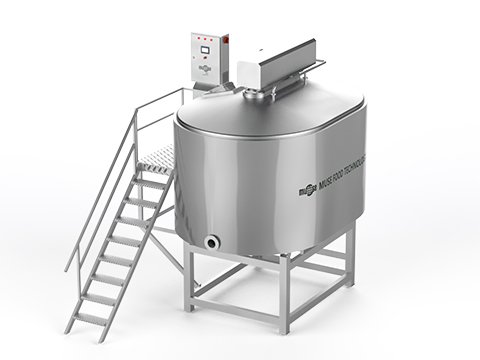
Cheese Processing Tanks are specially designed industrial tanks used for various stages of cheese production, including milk pasteurization, coagulation, curd cutting, whey separation, and ripening. They are made of stainless steel (typically AISI 304 or 316) and are designed to meet hygienic standards (e.g., EHEDG, FDA, 3-A).
Capacity: Available in models ranging from 500 liters to 20,000 liters.
Heating System:
Jacketed (Double Jacket): Indirect heating using steam or hot water.
Electric Heating Elements: Used for precise temperature control.
Cooling: Some tanks feature rapid cooling by circulating a coolant through the jacket.
Agitator (Mixer):
Propeller Type: Provides slow-speed homogeneous mixing.
Cutting Blades: Used to cut the curd (in curd processing tanks).
Temperature & pH Control: Integrated sensors working with automation systems.
Hygienic Connections: Tri-clamp or DIN standard fittings.
Sloped Bottom: Facilitates whey drainage.
Lid & Seals: Compatible with SIP (Sterilize-in-Place) and CIP (Clean-in-Place) systems.
Pneumatic or Manual Opening: Designed for operator safety.
Milk Loading: Pasteurized milk is loaded into the tank.
Heating/Cooling: Temperature is adjusted via the jacket system.
Coagulation & Curd Formation: Enzymes and starter cultures are added.
Curd Processing: Agitators and blades cut the curd to the desired size.
Draining & Discharge: Whey is separated, and the cheese is transferred to molds.


